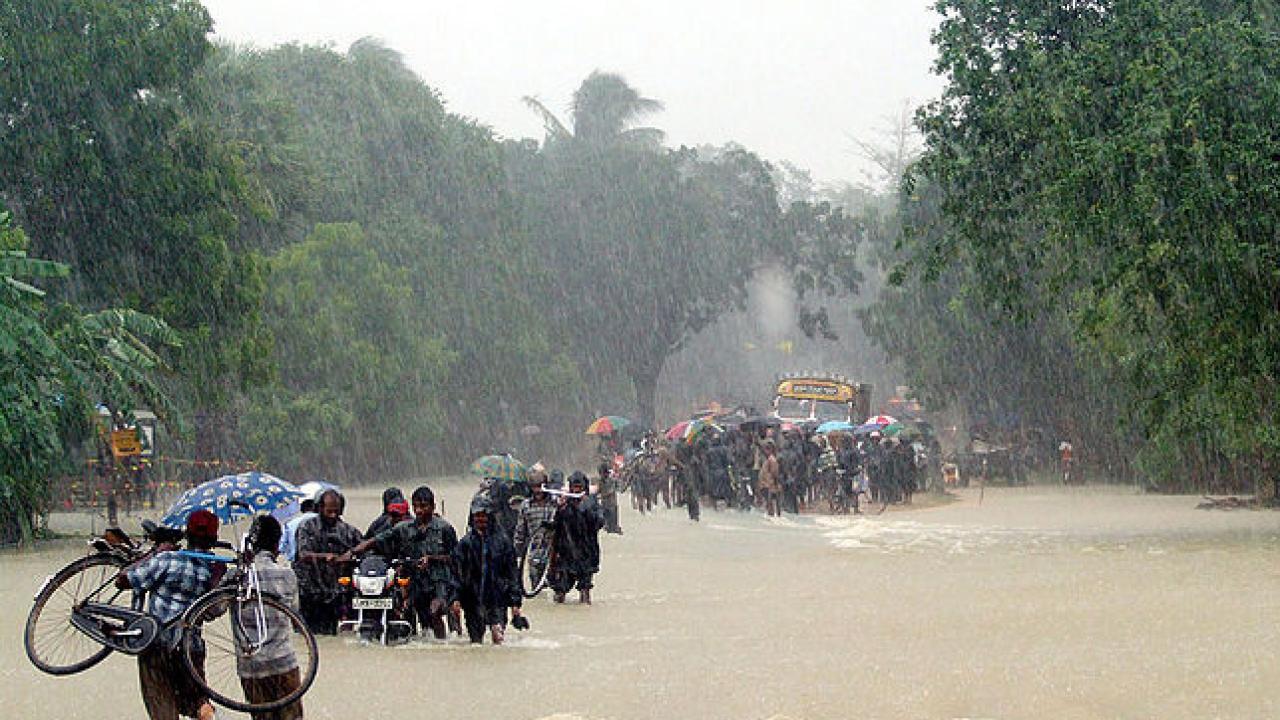
The world's population is growing, its resources are dwindling,
and the climate is changing in ways that will be hard to prevent or
prepare for. Climate change presents intimidating challenges to
people everywhere, especially to those in tropical countries where
populations are dense and storms are frequent. But how do we get
policymakers and the public to help fix the problem?
ICTP is currently sponsoring an annual targeted training activity
on climate change issues. This year, the topic is the monsoon
weather system in the tropics of the Eastern Hemisphere. The
activities alternatively focus on monsoons, El Niño or the
relationship between both.
"El Niño is the biggest phenomenon that affects the climate in all
tropical countries," said event organizer and climatologist
Jagadish Shukla of George Mason University in the US. "Most of the
developing countries are in the tropics." Climate scientists come
to ICTP from these vulnerable areas to learn from each other about
these climate systems.
Zahid, an event attendee, is a climate scientist from Maldives, an
island-chain nation off the coast of India. He works for the
Maldives Meteorological Service and attended the conference to get
experience from experts on climate change and monsoons. Both topics
are concerns for his home country, he said. "The last couple of
years we have been experiencing flooding from high rainfall," said
Zahid. "Also high waves are affecting Maldives. Just yesterday we
had an incident where waves came to the capital island and flooded
some areas."
Since arriving for the event, Zahid said the experience is
inspiring him to learn more about climate modelling, a field he has
no experience with. He also said he's learned some interesting
facts, such as that the connection between monsoons and a climate
pattern called the El Niño/La Niña Southern Oscillation has been
decreasing in recent decades.
This was also the first such conference to include a workshop on
framing discussions on climate change and sustainability for the
public. This added workshop expands the focus of the event so that
it's more interdisciplinary, including social sciences and life
sciences as well as physical sciences. "It's not just a science
problem. It's an economics problem. It's a policy problem," said
Shukla.
Much of the discussion on science communication focused on how to
discuss climate change with the public, as opposed to the more
technical way it is discussed among scientists. Jim Kinter, the
director of the Center for Ocean-Land-Atmosphere studies,
summarized the focus of that discussion as being about expressing
simple, clear points repeated by trusted sources. "We have always
assumed that by being good scientists with rigor and data to back
all of our assertions and careful statements that are
conservatively couched we are making ourselves trustable," said
Kinter. But that has not been enough to gain trust with the public,
whose values differ from culture to culture.
Furthermore, scientists seeking to affect policy have to express
what their findings mean without confusing their messages with
jargon that will get in the way of the public's understanding. "You
don't have to think of it as speaking down to the other individual
and dumbing down your conversation, but actually smartening the way
you present the message," said Kinter. "It should also be
provocative and stimulating so they ask you more questions."
















